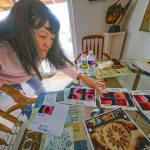
Indigenous Rising COVID-19 webinar brings Indian Country together

NAVAJO TIMES | Rima Krisst
Dallas Goldtooth, top left, Nicole Redvers, Stacy Bohlen and Linda Black Elk meet up in the virtual world to discuss the impacts of the coronavirus crisis in a webinar hosted by Indigenous Rising Media.
WINDOW ROCK
Within a short time span many in-person meetings have transitioned to the web when staying home and social distancing have suddenly become the norm.
Last Friday Indigenous Rising Media hosted the first in a series of online webinars about how Indian Country is coping with the coronavirus pandemic.
“Our intention is to share accurate information about this virus, how its effecting our communities, and how are we responding to the crisis,” said host Dallas Goldtooth (Mdewakanton Dakota/Diné), organizer for the Indigenous Environmental Network who was a leader in the NoDAPL movement and is member of the comedy group The 1491s.
Prominent Indian Health professionals, including naturopathic doctor Nicole Redvers (Deninu K’ue First Nation), CEO of the National Indian Health Board Stacy Bohlen (Sault Sainte Marie Tribe of Chippewa), and ethnobotanist Linda Black Elk (Catawba Nation) joined Goldtooth on Facebook live.
“This crisis has demonstrated we need to protect and cherish our traditional way of life, our teachings, our original instructions,” said Goldtooth.
Redvers said at a time like this it is important to remember we are part of a global community.
“Our indigenous brothers are sisters on every single continent are facing the same challenges we are,” she said. “Collectively if we bring our energy together, it can be very powerful.”
‘A medicine place’
Redvers said the COVID-19 crisis is a fluid situation because everyone is still learning about the virus, transmitted through tiny droplets of infected people through coughs, sneezes or contaminated surfaces.
“We’re fairly confident that droplets in the air is the primary way it spreads,” she said.
Redvers said a recent laboratory study found COVID-19 could live in the air for up to three hours, on cardboard for 24 hours, and on steel or plastic surfaces for up to three days.
As a public service, the Navajo Times is making all coverage of the coronavirus pandemic fully available on its website. Please support the Times by subscribing.
How to protect yourself and others.
Why masks work. Which masks are best.
Resources for coronavirus assistance
The greatest risk right now is for those sixty and above, she said.
“My big concern is for our elders and our sacred knowledge holders within the Native communities,” she said.
Redvers is also concerned about the amount of pressure on the medicine people right now.
“You can imagine a lot of people are really worried and they’re contacting their traditional healers,” she said. “We just need to be cautious as a community not overburden them or expose them.”
Redvers said some elders are going into containment where they are only doing consultations by phone and bag drops.
“We need to be taking care of the elders and ensuring that if we are asking them for knowledge that we’re also helping them,” she said. “We need to protect them.”
Redvers said it’s important to remember that from the traditional medicine standpoint, this pandemic was prophesied decades ago within many Native communities.
“They knew that a sickness was coming at this time and that it was a sign that we were becoming imbalanced with the earth,” she said. “This sickness would come to be able to ensure that we go back to the land. What that means is utilizing and creating that relationship with the land as a medicine place and going back to community based ways.”
Those who are fortunate enough to live off the land and can provide for themselves seem less stressed because they are more prepared, said Goldtooth.
However, an estimated half of Native peoples now live in urban areas, he said.
Some Native communities face a lack of adequate plumbing, access to water and overcrowded living conditions, which can add to the challenge of containing an outbreak, said Redvers.
She is also concerned that Indian health systems are significantly underfunded “on a good day.”
Ensuring there are enough resources to be able to handle the complication rate that is expected with this disease is paramount, she said.
Bridging Western, traditional medicine
“Western medicine is not ahead of the game right now,” said Redvers in reference to coronavirus.
While people with underlying health conditions are likely to have more serious complications with the disease, she said there are many unknowns.
“It’s evolving so quickly,” she said. “We just don’t have all the information.”
She said there are clinical trials happening with anti-viral drugs on but they are no closer to having the answers yet.
While there is still uncertainty about the energy of the virus, plant medicines can still have value, said Redvers.
“The good news is a lot of our medicines have very general actions because many of our plants contain hundreds of properties within them,” she said.
For example, data shows smudging can act as antimicrobial in the air around us, she said.
“It might not be specific to COVID, but if it is not going to hurt us, and it’s going to help clear the air, I don’t think there’s any harm in using these types of agents,” she said.
Black Elk, a plant-based medicine expert, said that herbs can be used both for prevention and if one does get sick.
She believes now is the perfect time to rely on traditional medicine especially because many medications and anti-viral drug prescriptions are not accessible in indigenous communities and can be prohibitively expensive.
She stressed it is important that everyone goes by the instructions of their elders, whether they are collecting food or medicine.
“Follow the protocols that were put in place by your people,” she said. “Make sure to sing the songs and say the prayers.”
It is also important to stay calm and not panic because stress and anxiety can weaken the immune system, said Black Elk.
Eating healthy and avoiding inflammatory foods like dairy and sugar is important too, she said.
She encourages everyone eat traditional foods and maintain a healthy gut micro-biome.
“Take your probiotics, rely on the medicines, rely on the foods,” she said.
There are many antiviral plants and ones high in vitamin C, said Redvers.
“Marrow bone broths are very immune stimulating as well,” she said.
Redvers said elderberry has beneficial anti-viral properties and she has no concerns about using it with COVID-19.
However, she too advises going by the advice of your practitioners.
Black Elk said her family is using elderberry along with other antivirals as a preventative measure.
If anyone has concerns about the effects of elderberry they can just stop taking it, she said.
Redvers confirmed that there is no hard data to prove that use of Ibuprofen with COVID-19 is harmful, but there is some circumstantial evidence of risks.
At this point in time, the recommendation is to stick with Acetometophine, she said.
‘Sacred obligation’
Bohlen said that she does not believe the Indian Health Service system is prepared for coronavirus and neither is the U.S. as a whole.
Bringing in resources is going to be critical to becoming prepared, she said.
“We need places where people can go for ICU beds, which we don’t have,” said Bohlen. “Our hospitals are 40 years old. The equipment is two times older than in any other place.”
Bohlen said there is a shortage of medical supplies across the country and 90 percent of tribes have not received personal protective equipment they need.
Having access to National Strategic Stockpile of medical supplies would be a step in the right direction, she said, but that presently isn’t the case for tribes.
“Sometimes an emergency is what you need to correct these structural things,” she said.
A couple of weeks ago, the first supplemental COVID-19 aid package went through Congress and $40 million was set aside for tribes in the U.S. to prepare for the outbreak of the virus.
However, tribes have not received those monies yet.
“There are some nuances with regard to funding that are making it very difficult for the tribes to get the money,” said Bohlen. “We can’t get a straight answer.”
She explained that the tribes uniformly wanted to receive the funding through the Indian Health Service, because it has the best methods to disseminate the money, but instead it went to the Centers for Disease Control and Prevention to be administered.
“They are not as familiar with tribes and they don’t have the cultural competency and financial bridges needed to get that money out quickly,” said Bohlen.
She said that the second coronavirus supplemental stimulus is budgeted at $86 million will go directly to IHS.
In the third federal stimulus package, tribes are asking for $1.5 billion for health care, she said.
Bohlen said there are also questions about whether the tribes will get help with economic impacts, including the closure of small businesses and reservation enterprises such as casinos and tourist destinations.
“NIHB is trying to help insure Indian country doesn’t get left out,” she said.
Bohlen said she’s disappointed that public health uniformed officers commissioned officers have been deployed to other coronavirus hotspots.
“We have areas where there is a 40 percent vacancy rate for health care providers in Indian Country,” said Bohlen. “This is not the time to be sending our doctors and experts off reservation.”
She pointed out that people are referring to “hotspots” but because of the shortage of testing, we don’t really know all of the areas where there might be major outbreaks.
“I have to make the assumption that we’re living in a hot spot. The physicians should stay where they are if they are supposed to be serving Indian Country,” said Bohlen. “That is the trust responsibility. That is the sacred obligation of the federal government. That is what we negotiated for, fought and died for.”
With high rates of diabetes, cardiovascular and immuno-disease, Indian Country is particularly vulnerable, said Goldtooth.
“The most vulnerable people, our First Nations, should not be shortchanged,” said Bohlen.
Goldtooth asked what tribal leaders and regular citizens can do to help.
“Tribal leaders are under a lot of pressure now,” said Bohlen. “They have a heavy burden to carry. We need to pray for them.”
Participate in webinars, be engaged, write to your members of Congress, and communicate with local health officials, advised Bohlen.
“Your voice matters,” she said. “Keep your stories coming.”
‘Stay at home, pray at home’
Redvers says social distancing is one of the most crucial things we can do at this time.
“If we are within two meters of someone who is coughing, we are far more at risk for being exposed,” she said.
Furthermore, Redvers said it is estimated that 50 percent of coronavirus infections are asymptomatic.
“They are able to still pass on the virus to other members of the community,” said Redvers. “It is especially important is youth to take this seriously and stay away from others.”
People can put others at risk if they are not abiding by guidelines, she said.
“We are strongly advocating people to stay home and practice social distancing to protect not only their families and themselves, but elders and people who have compromised immune systems,” said Goldtooth.
One of the reasons Italy got hit so hard, said Redvers, is because they didn’t start social distancing soon enough.
Goldtooth asked the panel what their thoughts were about people who weren’t taking the warnings seriously.
“This is not a maybe thing,” said Black Elk. “This is a real thing.”
“We’re resilient,” she said. “However, I don’t want us just to ‘get through this,’ I want us to thrive through this.”
Just as Mother Earth is begging to do, she said.
“She’s cleansing herself,” she said. “Stay away from people and let Mother Earth heal herself.”
Black Elk said it is traditional for us to distance ourselves especially this time of year when it is so easy to pass viruses and bacteria.
Goldtooth said many people were wondering about doing sweats at this time.
Redvers explained that most sweats remain at a temperature of 120 degrees Fahrenheit, but some research has indicated that coronavirus might actually survive up to 132 degrees.
“There are often medicines used on the grandfather rocks that do provide additional spiritual actions,” she said. “It’s really a matter of the traditional person because I trust their judgment in how they’re running their ceremony and their sweat.”
She said, however, it is important at this time not to put sweat lodge holders at risk of exposure.
“It’s a difficult question,” she said. “It’s not a simple yes or no. Be cautious.”
Black Elk said she was recently criticized because she did not want to share a pipe with 30 other people.
“It’s not that I don’t have faith,” she said. “I have deep faith in prayer, but I’m also also a scientist.”
Black Elk recommended, “stay at home, pray at home” and go into a sweat alone if you want to and pray for the people.
“I love that our people are so resilient that they have a positive attitude, but this is not a race to the bottom,” said Bohlen.
“We need to be on this planet,” she said. “We need to thrive and survive and give the vibrant gifts that the creator has given us.”
Black Elk believes that Native communities do have some overall advantages in their favor.
“On one hand I feel like we are completely unprepared from a medical perspective,” she said. “On the other hand I feel no one is more prepared because we have our traditional medicines and a relationship with the land.
“We’re hunters, we’re foragers, we garden, we have seeds that we’ve been saving,” she said. “We have a gift. We need to be confident and put our trust in that knowledge.”
Goldtooth thanked health care workers and those providing essential goods and services on the front lines of the COVID-19 crisis.
“We want to recognize those who are risking their lives because they might not have a choice or are doing it for a higher purpose,” he said.
Redvers advises being “smart resilient” and to use “one eye for traditional knowledge systems and other eye for public health” through methods like social distancing.
This is a moment that Mother Earth hasn’t experienced in a few hundred years, where we step back and let nature take it’s course, said Goldtooth.
“I know some of us feel alone,” he said. “This is a moment that the entire world is sharing and is going to change history. It’s a chance for us to really come together, to build community, and enjoy a break from all that craziness that is the modern world.”

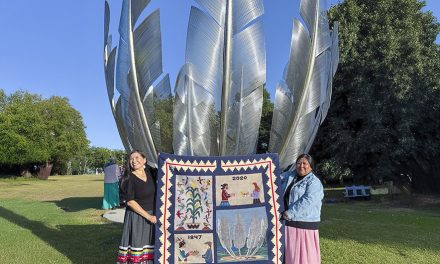
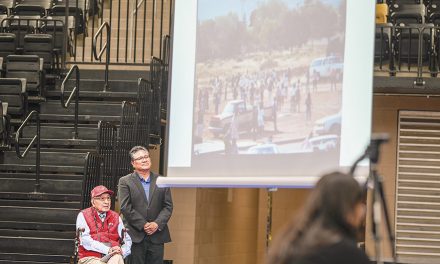

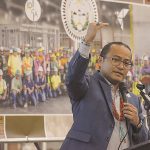


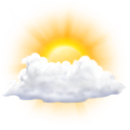
 Highway 264,
Highway 264, I-40, WB @ Winslow
I-40, WB @ Winslow